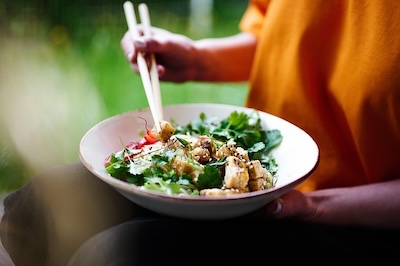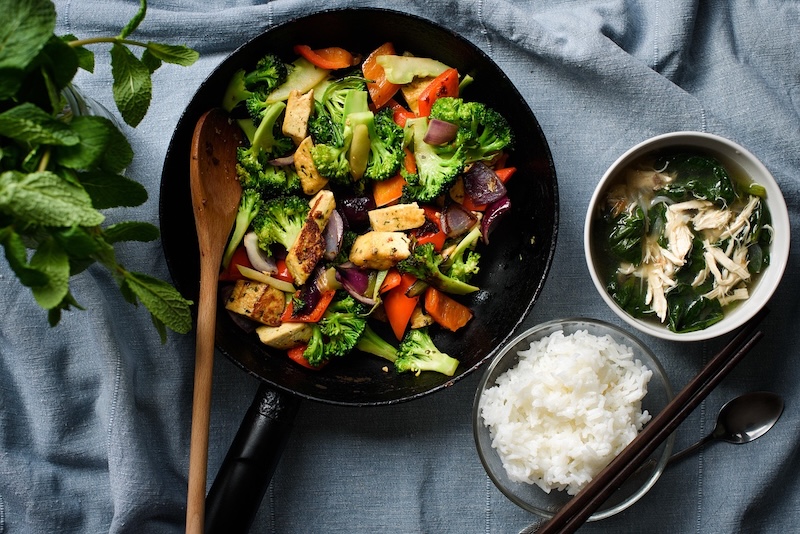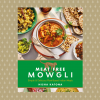The Evolution of Pan-Asian Cuisine: From Street Markets to Fine Dining – Every culture has its comfort food. For much of Asia, comfort tastes like smoke and soy. It is food prepared on the go, tossed by instinct, eaten hot. Long before Pan-Asian cuisine was the hot item in trendy restaurants, it was survival, care, family. Its journey from the sounds of a street stall to the peace of a London dining room is not one of reinvention but recognition.
The Roots of Pan-Asian Cuisine

Across Asia, eating has never been separable from the rhythm of daily life. Street markets were a city’s pulse long before they were tourist attractions. They were spaces of exchange, places where recipes moved as freely as people themselves. The noodle-bowl sellers or meat-skewer sellers did not think in terms of “fusion.” They were catering to laborers, tourists, students, whoever had some coins and some appetite. The dishes they prepared were spontaneous, hierarchical, and proximal to the consumer in front of them.
A walk through a Bangkok or Jakarta night market still has that same flavor. Oil spitting in woks, a hiss of chilli and heat, the scent of lemongrass carried by a breeze. The food is built within seconds but stands on millennia of inherited proficiency. Balance is everything. Heat and freshness, spice and sweetness, texture as vital as flavor.
From Migration to Modern Menus
As migration carried those cooks and their memories to the UK, something new was formed. In the 1960s and 70s, Asian individuals began opening small cafes and takeaways across Britain. They were frequently designated merely “Chinese” or “Indian” restaurants, even where menus borrowed freely from Japan, Thailand, or Vietnam. Ingredients were restricted, so recipes were adapted. The spiciness was toned down. Fermented flavoring was reduced. But the soul remained. It was food that had been constructed to unite people, to nourish quickly, to comfort.
A Changing British Palate
The British palate had altered by the 1990s. Cut-price air fares, television holiday shows, and an appetite for curiosity transformed what individuals wished to eat. Customers who had slurped their noodles in Hanoi or wrapped themselves around satay in Bali returned home with new aspirations. Restaurants adjusted. And then, suddenly, sushi had a meeting with curry on the same plate, and suddenly the concept of the pan asian restaurant started making sense. It wasn’t just about fusing flavours from the entire continent, but about bringing the entire food culture of Asia into something that was both modern and metropolitan.
Others dismissed it as a trend, but time would have its own say. Demand for this sort of food kept growing, not because it was fashionable, but because it was representative of how people actually lived and ate. The British restaurant scene was becoming more plastic, more accommodating to merge and reinterpret. So too for Asian cooks in London, Manchester, and Glasgow. They were experimenting too, not to Westernize their cuisine, but to tell their own stories in a language the expats and locals could understand.
Street Food Spirit, Fine Dining Precision
You can now find Pan-Asian development on every corner of the city. You still hear the ring of woks and detect the heady incense of caramelizing sticks in places like Borough or Camden. There’s informality in the ambience, the same energy that initially defined street food culture. But enter a restaurant in Mayfair or Shoreditch and the atmosphere is different. Here, the same street-given ideas are tamed. A bowl of ramen becomes an art of depth and transparency. A simple bao is elevated as a pedestal for truffle and wagyu. The flavors are unique but enhanced, the spirit retained but refined.
The New Generation of Chefs
It is easy to look upon this process as a battle between authenticity and accommodation. But the truth lies somewhere in the middle. The best Pan-Asian cuisine understands that refinement is not so much about erasing roots. Instead, it can highlight them. The precision of Japanese knife work, the languor of a Malaysian curry, the geometry of Thai salad — all of these skills have been revitalized in modern kitchens. Haute cuisine does not replace the street. It listens to it, reinterprets it, and sometimes even returns it, chastened.
Chefs at the forefront of this revolution are redefining the concept of cooking “Asian” food in Britain. They do not belong to a specific place. A menu could begin with a sashimi course that alludes to the fragility of Kyoto, follow with an Indonesia sambal-cooked seafood dish, and conclude with a pandan dessert that evokes memories of Singaporean hawker sweets. Each dish is a story of travel, of inquiry, of admiration.
For the diners themselves, the experience has changed. British diners are more conscious now of what they are consuming. They understand that ramen and pho are not interchangeable, that sushi is not sashimi, that miso and gochujang are not the same. There is a desire to learn, but also to bond. Pan-Asian cuisine provides that bond. It provides variety, conversation, and discovery all in the same sitting.
Pan-Asian Cuisine and the British Table
To some extent, the pan-Asian movement is an echo of Britain’s multicultural rhythm. It exists through contrast and accommodation. It is as much about the cook who stands in the kitchen as it is about the individuals who fill the restaurant. The exchange is continuous, and the result is a continuously shifting, continuously evolving language of cuisine.
And even as it wears its modern gloss, Pan-Asian cuisine still holds onto its affective origins. Behind every glistening plate and carefully composed dim sum is a memory of a cook crouched over an open flame, tasting by feel, guided by recollection. The food might arrive on hand-painted plates these days, but it still carries community, patience, and generosity.
Perhaps that is why the evolution of Pan-Asian cuisine feels so complete. It has supplemented the traditional, not replaced it; layered upon it, as layers layer in a dish. From hawker stall-in-a-flash fry to the deliberate tempo of a tasting menu, it remains based on what kept it robust in the beginning: balance, integrity, and shared delight.
From Survival to Celebration
What had once been survival food is now a celebration of identity and of art. And when you eat in a London restaurant and taste something that has with it the aroma of some forgotten street corner, you know the real triumph of Pan-Asian cuisine. It is not fusion for fashion’s sake. It is a connection made edible.
The fire still burns, just in a different kitchen.
Poppy Watt


